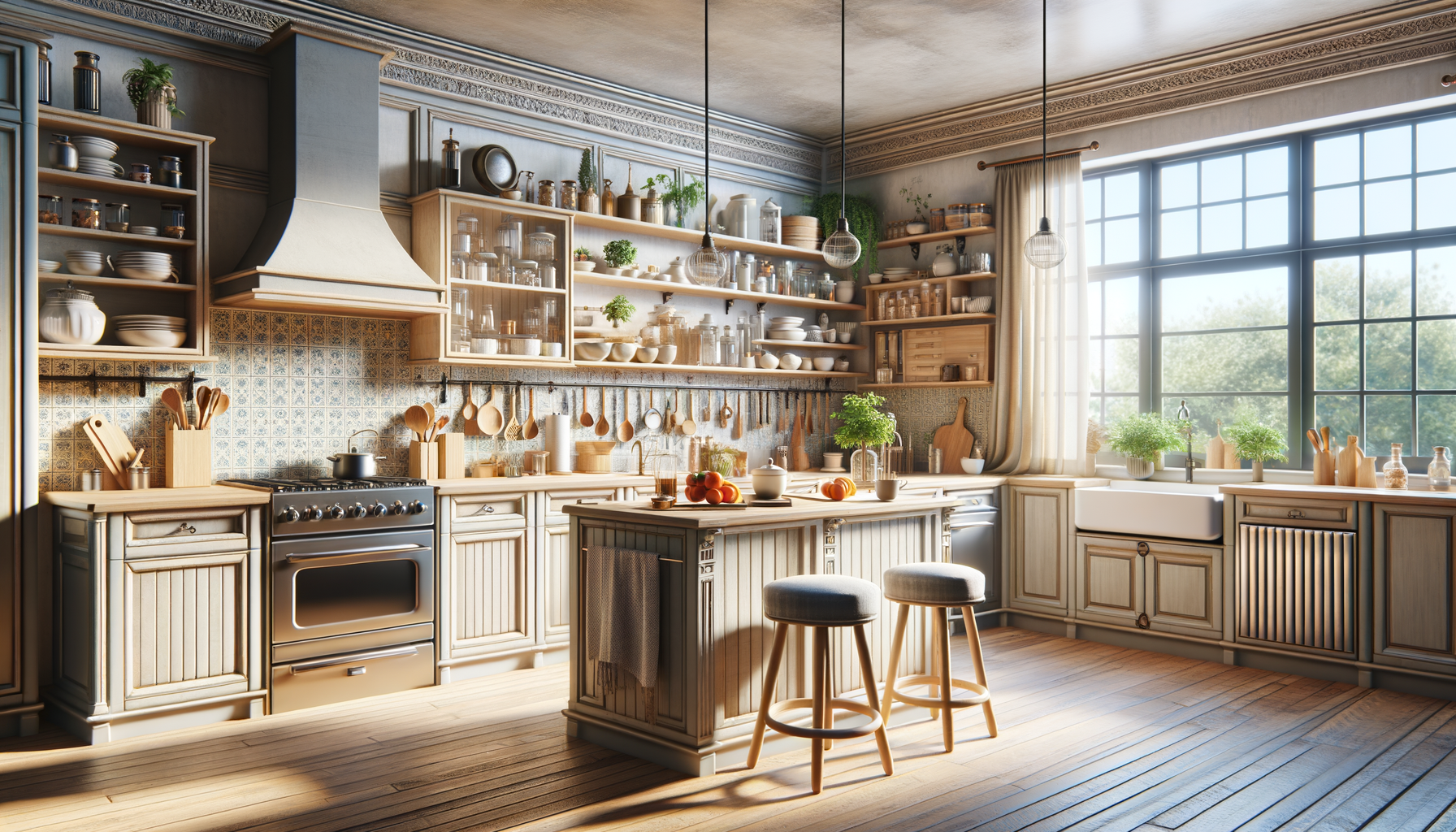The Evolution of Kitchen Design
Kitchen design has come a long way from its humble beginnings. Originally, kitchens were purely functional spaces, often tucked away from the main living areas. However, modern kitchen design emphasizes the kitchen as the heart of the home, a place for gathering and entertaining. This evolution has brought about a focus on both aesthetics and functionality, with an emphasis on creating a space that is both beautiful and efficient.
Today’s kitchens often feature open layouts that integrate seamlessly with living and dining areas. This trend reflects a shift towards more casual and communal living spaces. The integration of dining surfaces within the kitchen itself is a popular choice, allowing for a multifunctional space where cooking, dining, and socializing can occur simultaneously.
Key elements of modern kitchen design include the use of high-quality materials, innovative storage solutions, and cutting-edge appliances. These features not only enhance the visual appeal of the kitchen but also improve its functionality, making daily tasks easier and more enjoyable.
Customizing Your Kitchen: Options and Considerations
When it comes to kitchen design, customization is key. Every homeowner has unique needs and preferences, and a custom kitchen allows for the creation of a space that reflects individual style and functionality requirements. One of the top options in custom kitchen design is the inclusion of versatile islands. These islands can serve multiple purposes, from additional prep space to casual dining areas, and often include built-in storage solutions.
Another important consideration is the choice of materials. Countertops, cabinetry, and flooring should not only be aesthetically pleasing but also durable and easy to maintain. Popular materials such as quartz, granite, and hardwood offer both beauty and resilience, making them ideal choices for busy kitchens.
Lighting is another crucial aspect of kitchen design. Proper lighting can enhance the ambiance of the space and improve functionality. Consider incorporating a mix of ambient, task, and accent lighting to create a well-lit and inviting environment.
The Role of Technology in Modern Kitchen Design
Technology plays a significant role in today’s kitchen designs, offering innovative solutions that enhance both functionality and convenience. Smart appliances are among the most popular technological advancements in the kitchen, providing features such as remote control, energy efficiency, and advanced cooking capabilities.
In addition to smart appliances, many modern kitchens incorporate integrated technology, such as built-in charging stations and smart lighting systems. These features allow homeowners to stay connected and manage their kitchen environment with ease.
Technology also extends to the design process itself, with virtual design tools enabling homeowners to visualize their kitchen layout and make informed decisions about design elements before construction begins. This approach ensures a more efficient and satisfying design experience.
Designing for Functionality: Key Considerations
Functionality is at the core of any successful kitchen design. A well-designed kitchen should facilitate easy movement and access to essential areas, such as the cooking zone, prep area, and storage spaces. The work triangle concept, which focuses on the efficient arrangement of the sink, stove, and refrigerator, remains a fundamental principle in kitchen design.
Storage is another critical component of functionality. Thoughtful storage solutions, such as pull-out pantry shelves, deep drawers, and custom cabinetry, can maximize space and keep the kitchen organized. Consideration should also be given to the placement of appliances and work areas to ensure a seamless workflow.
Ergonomics is an often-overlooked aspect of kitchen design. Counter heights, cabinet placement, and appliance positioning should be tailored to the homeowner’s needs to reduce strain and enhance comfort during kitchen tasks.
Incorporating Style and Personality into Your Kitchen
While functionality is essential, style and personality are what truly make a kitchen unique. Personal touches can be incorporated through the choice of colors, finishes, and decorative elements. Whether you prefer a sleek modern look or a cozy traditional style, there are countless ways to express your personality in your kitchen design.
Color schemes play a crucial role in setting the tone of the kitchen. Neutral palettes can create a calm and timeless atmosphere, while bold colors can add energy and vibrancy. Textures and finishes, such as matte or glossy surfaces, can further enhance the visual appeal of the space.
Accessories and artwork are also effective ways to infuse personality into the kitchen. Consider displaying a collection of cookbooks, incorporating unique light fixtures, or adding a statement piece of art to create a space that feels personal and inviting.



Leave a Reply